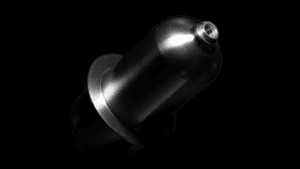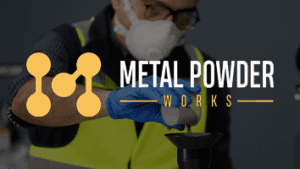Titomic announces new teaming agreement with REPKON USA to develop cold spray additive manufacturing applications.
Huntsville, AL – Titomic Limited (ASX: TTT), the world’s leading provider of cold spray additive manufacturing solutions using its proprietary Titomic Kinetic Fusion™ technology, has signed a teaming agreement with REPKON USA, a specialist in advanced metal and defence manufacturing.
Titomic and Repkon Group have a long-standing relationship. In 2021 Repkon invested AUD 2.5 million in Titomic. This teaming agreement replaces the previously agreed Turkish joint venture agreement and establishes a United States framework to leverage Titomic Kinetic Fusion™ cold spray technology in REPKON USA’s existing and fast-growing product lines.
The Titomic and REPKON USA teams will engage in joint research, development, and testing of Titomic Kinetic Fusion™ cold spray applications in cannon barrels, gun barrels, and warheads. These applications will demonstrate the advantages that Titomic Kinetic Fusion™ can bring to the defense and aerospace market space in support of the U.S. Government, with potential for other applications.
"Our partnership with REPKON USA represents more than collaboration - it represents a shared commitment to fundamentally transform how we advance and sustain defense manufacturing and is a more effective way to combine our leading respective technologies than the previously announced joint venture," With Titomic Kinetic Fusion™, we bring a technology that restores, enhances, and builds critical assets faster, smarter, and with greater resilience.”
Jim Simpson, CEO & Managing Director of Titomic
"We are excited to work with the REPKON USA team and begin research and development activities at our facility in Huntsville, Alabama. We are focused on delivering field-ready solutions that ensure mission readiness, extend asset life, and strengthen the U.S. allied industrial base with next-generation manufacturing capability.”
Dr. Patricia Dare, President of Titomic USA
Through this partnership, Titomic will also work with REPKON USA to leverage Titomic Kinetic Fusion™ for repair of assets in the field. This will bring equipment back to the original form, fit, and function and provide the warfighter with the necessary capability in a significantly reduced timeframe and within the battlefield and/or training environment. In addition to repairs, the team will partner on coatings of the REPKON USA barrels to provide increased performance to enable a competitive advantage in this market moving forward.
President of REPKON USA, Bryan Van Brunt
This partnership reinforces Titomic’s position as a leader in advanced metal manufacturing, coatings, and repair technologies, furthering its commitment to providing timely and innovative solutions to defense and aerospace customers worldwide, and REPKON USA’s continued push to modernize manufacturing techniques in the USA and within the allied defense industrial base.
— END —
About REPKON USA
Headquartered in Tampa, Florida, REPKON USA Holdings, Inc. is a leader in advanced metal formation and manufacturing, and chemical energetics production. REPKON USA has approximately 400 employees with locations in Florida, Kentucky, and Texas.
Learn more via repkon-usa.com
INVESTOR CONTACT
Geoff Hollis
Titomic Chief Financial Officer
P: +61 438 168 008
E: [email protected]
MEDIA CONTACT
Dr. Patricia Dare
President, USA
P:+1 408 306 4975
E: [email protected]
Ready to revolutionise your manufacturing?
Frequently asked questions
TKF costs significantly less than traditional manufacturing methods for the following reasons:
- It doesn’t need large-scale tooling (such as vacuum moulds) to produce parts. A simpler setup means reduced costs.
- It turns metal powder to part in just hours, by depositing the powder at supersonic speed to rapidly build up parts layer by layer – so there’s no need for casting or forging. Plus, the part you need is the part you make, saving time and materials.
- It keeps material costs down. For example, when we manufactured a 1.2m titanium ring, the ‘as built’ weight was 60kg while the final part weighed 56kg – representing a ‘buy to fly’ ratio of 1.08 with material costs of only A$3,000.
Our compact cold spray systems cost considerably less than traditional repair and resurfacing methods for the following reasons:
- You can resurface and refurbish parts in just minutes.
- Materials often cost less than $300.
- You no longer need to outsource repairs. For example, a shower floor manufacturer quoted $40,000 to ship a damaged resin transfer moulding tool overseas spent just $3,000 repairing it with Titomic’s D523 system – as well as saving months of downtime.
We’ve achieved typical density rates of 90-95% and over 99% when enhanced by post-processing.
If needed, it’s also possible to create less dense, more porous coatings for grip, abrasion, chemical processing and more through process optimisation, powder manipulation, and post-processing parameters.
Generally, you can achieve mechanical properties similar to casting and forging. While some parts may need to be processed with a heat treatment to make them more ductile, we can tailor process variables to meet your specific needs – a clear advantage compared to other methods.
It depends on what parts you need, as well as the mechanical properties the application requires. However, generally parts created with TKF will need some post-processing heat treatment.
Cold spray doesn’t require heat to melt the materials being sprayed. This is different to traditional metal spraying methods like welding or thermal spraying, which use heat to melt the material before it’s applied to a surface.
Instead, a high-pressure gas is used to accelerate tiny metal particles (which are usually less than 50 micrometres in size) to supersonic speeds. This creates heat through kinetic energy, when the particles collide with the surface of the object being sprayed.
Cold spray works by exploiting the kinetic energy of tiny metal particles. Low-to-high pressure gas is used to accelerate the particles (which are usually less than 50 micrometres in size) to supersonic speeds. These are then sprayed onto a surface where they compress and deform to create a cohesive bond.
This results in a strong, dense coating that can be used for a variety of applications – such as repairing damaged parts, improving the surface properties of a material, or creating new, complex shapes.
There are many metals that can be used in our cold spray systems. This includes aluminium, copper, nickel, titanium, stainless steel, Inconel, and more.
Since these all have different characteristics – such as strength, ductility, and resistance to corrosion – the chosen metals will depend on the application, as well as the properties needed for the final product.
Some metals may also be easier or more difficult to cold spray, depending on their melting point, ductility, and other factors.
What makes TKF so beneficial is that it can fuse dissimilar metals together. This means you can leverage the strengths of multiple metals in a single, monocoque part. For instance, you can fuse copper to titanium, nickel to cast iron, and much more.
Cold spray can be used on a variety of surfaces. This includes metals, ceramics, plastics, and composites.
The process is particularly useful for repairing worn or damaged metal parts, as it can restore the surface to its original shape and properties without causing distortion or weakening the material.
Our cold spray systems can also be used to add new features or properties to a surface, such as improved wear resistance, corrosion resistance, or thermal properties.
You can even use it to create new shapes or structures that would be difficult or impossible to achieve with traditional manufacturing methods.
- Aerospace: Repair and restore worn or damaged aircraft parts (such as engine blades, landing gear, and wing components), or add corrosion-resistant coatings to aircraft surfaces.
- Automotive: Repair and restore worn or damaged engine components (such as pistons, cylinder heads, and crankshafts), or add wear-resistant coatings to automotive parts.
- Marine: Repair and restore worn or damaged marine components (such as propellers, shafts, and rudders) or add corrosion-resistant coatings to marine structures.
- Oil & gas: Repair and restore corrosion and wear (such as shafts, bearings, piping, and valves).
- Electronics: Add conductive coatings to electronic components (such as circuit boards and antennas), as well as repair and restore electronic devices.
- Manufacturing: Create new shapes or features on metal parts (such as textured surfaces or complex geometries), or add wear-resistant coatings to industrial components (such as machine tools and moulds).



